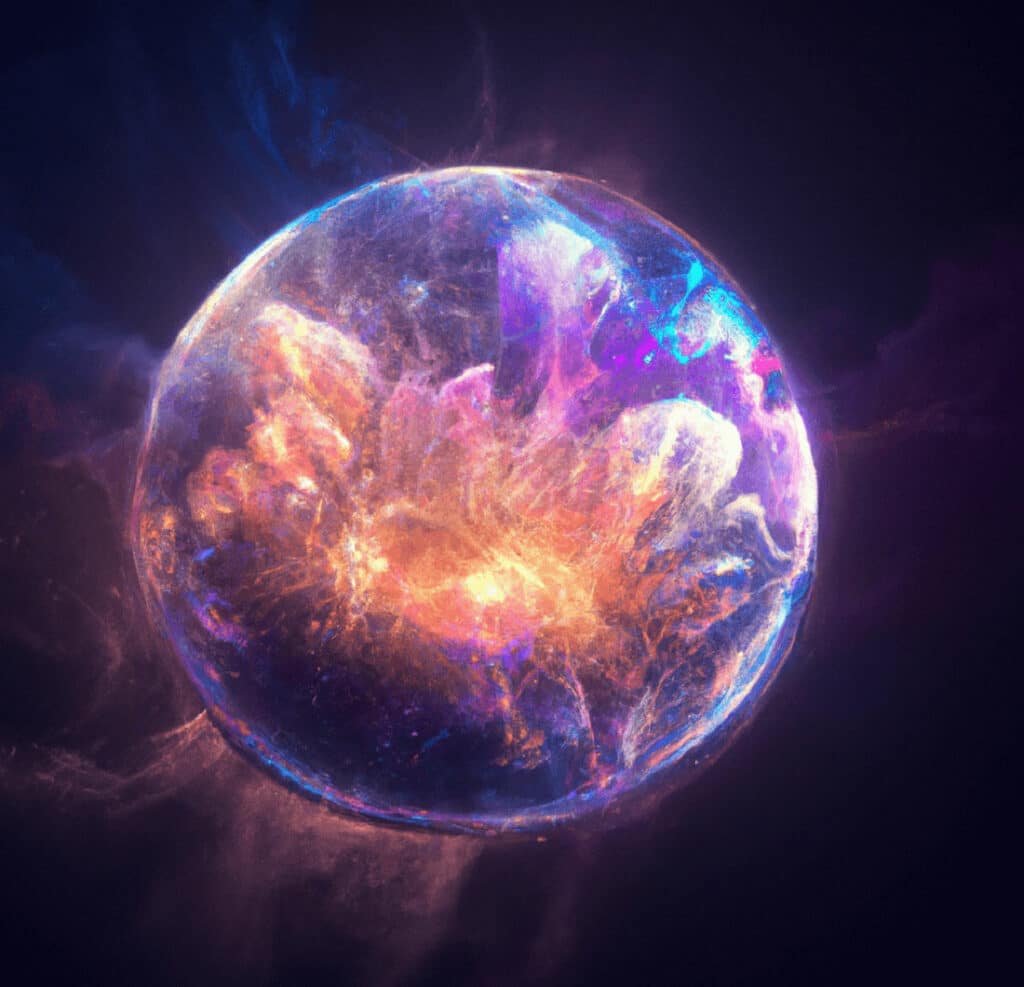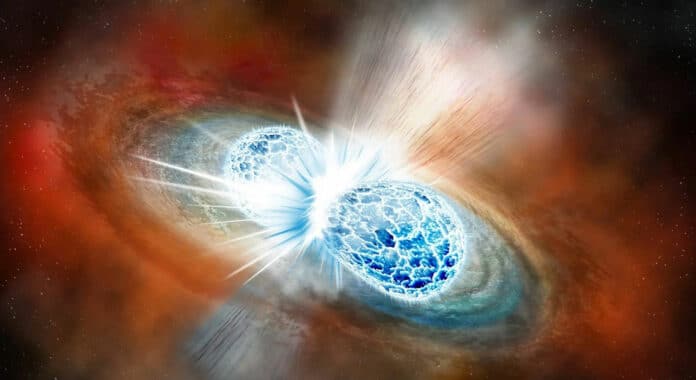The mergers of neutron stars expel a heavy-element-enriched fireball that can be observed as a kilonova. The kilonova’s geometry is a key diagnostic of the merger and is dictated by the properties of ultra-dense matter and the energetics of the collapse of a black hole.
But we still do not know a great deal about this violent phenomenon. When a kilonova was detected at 140 million light-years away in 2017, it was the first time scientists could gather detailed data.
The data from this enormous explosion is still being interpreted by scientists worldwide, including Albert Sneppen and Darach Watson from the University of Copenhagen, who made a startling discovery.
Astronomers suggest that the collision of neutron stars produces an explosion that, contrary to what was believed until recently, is shaped like a perfect sphere. Although it is currently unclear how this is feasible, the finding might offer a new way to understand basic physics and calculate the Universe’s age.
Albert Sneppen, a Ph.D. student at the Niels Bohr Institute and first author of the study published in the journal Nature said, “You have two super-compact stars that orbit each other 100 times a second before collapsing. Our intuition, and all previous models, say that the explosion cloud created by the collision must have a flattened and rather asymmetrical shape.”
That’s why scientists are surprised that this is not the case for the kilonova from 2017. It is completely symmetrical and has a shape close to a perfect sphere.
Darach Watson, associate professor at the Niels Bohr Institute and second author of the study, said, “No one expected the explosion to look like this. It makes no sense that it is spherical, like a ball. But our calculations clearly show that it is. This probably means that the theories and simulations of kilonovae that we have been considering over the past 25 years lack important physics.”

But the main puzzle is how the kilonova can be spherical. Scientists speculated that there must be unexpected physics at play.
The explosion will become spherical if a massive amount of energy blasts out from its center, smoothing out an otherwise asymmetrical shape. Therefore, the spherical shape indicates a surprising amount of energy at the collision’s core.
The neutron stars briefly combine into a single hypermassive neutron star during the collision before collapsing into a black hole. The researchers question whether a significant portion of the secret is hidden in this collapse:
Perhaps when the star falls into a black hole, the energy from the hypermassive neutron star’s immense magnetic field is released, creating a “magnetic bomb.” The distribution of materials in the explosion may become more spherical due to the release of magnetic energy. If so, making the black hole might involve a lot of energy.
However, another feature of the scientists’ discovery needs to be adequately explained by this explanation. All elements produced are heavier than iron, but according to earlier theories, the extremely heavy elements, like gold or uranium, should form in different locations in the kilonova than the lesser elements, like strontium or krypton, and they should be expelled in different directions. However, only the lighter elements, which are equally scattered throughout space, are detected by scientists.
Hence, scientists believe that the enigmatic elementary particles, neutrinos, about which much is still unknown, also play a key role in the phenomenon.
Albert Sneppen said, “An alternative idea is that in the milliseconds that the hypermassive neutron star lives, it emits very powerfully, possibly including a huge number of neutrinos. Neutrinos can cause neutrons to convert into protons and electrons and thus create lighter elements overall. This idea also has shortcomings, but we believe that neutrinos play an even more important role than we thought.”
“The shape of the explosion is also interesting for an entirely different reason: Among astrophysicists, there is a great deal of discussion about how fast the Universe is expanding. The speed tells us, among other things, how old the Universe is.”
“And the two existing methods to measure it disagree by about a billion years. Here we may have a third method that can complement and be tested against the other measurements.”
“The so-called “cosmic distance ladder” is used today to measure how fast the Universe is growing. This is done simply by calculating the distance between different objects in the Universe, which acts as rungs on the ladder.”
Darach Watson continues, “If they are bright and mostly spherical, and if we know how far away they are, we can use kilonovae as a new way to measure the distance independently – a new kind of cosmic ruler.”
“Knowing what the shape is, is crucial here because if you have an object that is not spherical, it emits differently, depending on your sight angle. A spherical explosion provides much greater precision in the measurement.”
Journal Reference:
- Sneppen, A., Watson, D., Bauswein, A., et al. Spherical symmetry in the kilonova AT2017gfo/GW170817. Nature 614, 436–439 (2023). DOI: 10.1038/s41586-022-05616-x
